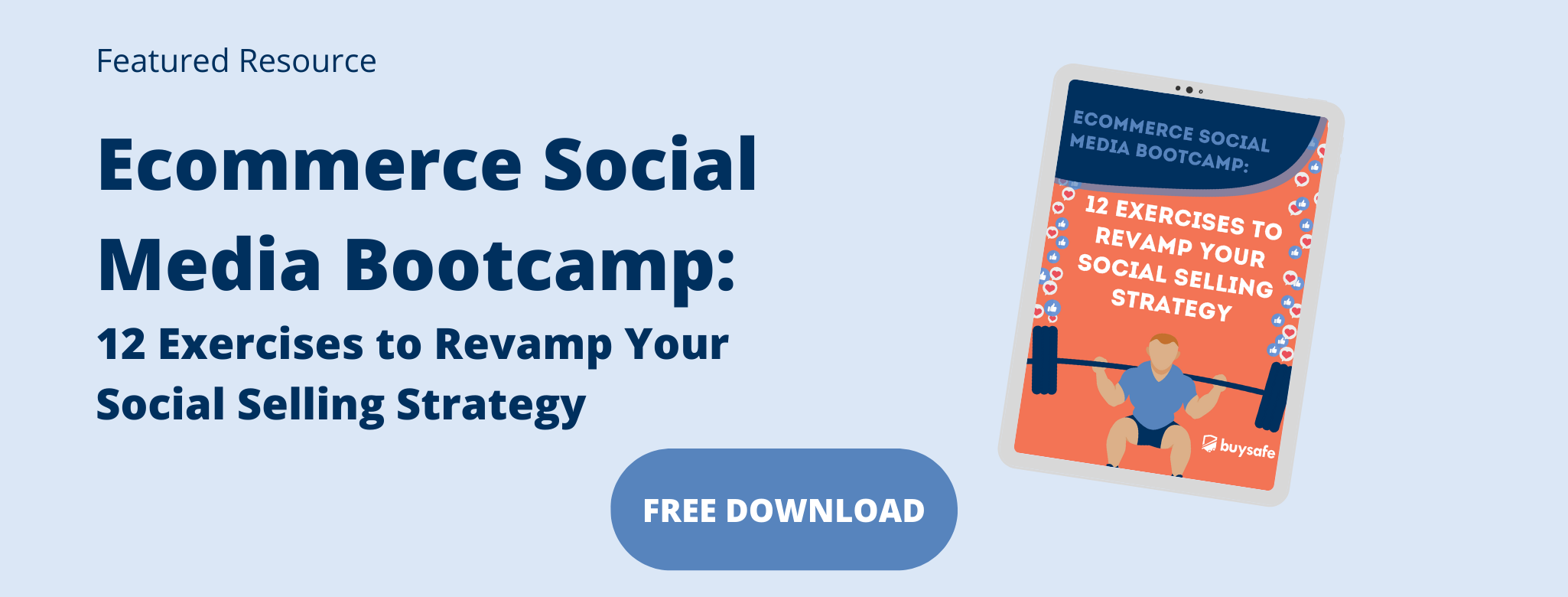

For the latest on ecommerce tips and best practices.
Ecommerce Marketing: Our Top 10 Tips

Wading through the sea of ecommerce marketing tips can be tricky. We’ve compiled 10 of our favorites that you can implement into your strategy to improve engagement and increase your conversions.
Email campaigns, pay-per-click ads, content strategy, SEO implementation, optimizing user experience… with so many ecommerce marketing tips out there, how do you narrow your focus and find what works for you?
It can be tough to determine exactly which tools are best for your specific business— and the truth is, there isn’t a singular one-size-fits-all answer. But in general, there are a group of marketing tips that every business could benefit from in one way or another. We’ve compiled our top 10 favorite Ecommerce marketing tips to help you hit the ground running and start seeing the results you’ve been searching for.
1. Automated Email Marketing Campaigns
Email marketing is far from a dead practice. With the right strategy and campaigns, email marketing is a great way to both keep your shoppers engaged and convert hesitant prospects.
A simple coupon or free shipping offer can be the defining encouragement that a reluctant shopper needs to convert. With an occasional email, you increase your chances of catching a hesitant shopper at just the right moment to earn a conversion.
With a variety of email options to choose from, it’s important to research an email marketing strategy that would be best suited for your customer’s behavior.. You can always A/B test different messages and take inspiration from your competitors who are doing well in that area. To read more, check out our blog on what it takes to build a great email.
2. Diversify Your Social Media Platforms
Social media has become a powerhouse of gaining conversions for Ecommerce businesses. With millions of social media users spread across multiple platforms, you’re bound to attract new shoppers with a well-planned social strategy. But social media isn’t a start and walk away tool: It needs to be consistently updated, monitored, and optimized to maintain engagement and improve performance.
Check out our post on the Basics of Ecommerce Social Media for Social Selling Success.
Currently, Instagram and Facebook are becoming increasingly optimized for ecommerce businesses. Both platforms allow you to create business pages and use analytics to better understand your followers’ engagement, helping you optimize your performance. Facebook Shops allows you to sell your products within Facebook and Instagram, so shoppers don't even have to leave the platform.
Free Download: Ecommerce Social Media Bootcamp
3. Create Original Content
Your website content serves as your online sales person. Are you reaching your target audience and delivering the answers and products they’re looking for? You can’t just copy and paste basic product info anymore— you need to be building original content that reflects your brand’s unique voice and tone. With original content and SEO, your website will have a better chance of ranking higher for the keywords you most use.
This rule of originality also goes for photography. An ecommerce site filled with mis-matched images and stock photos does little to build confidence in shoppers. If you take the time to produce your own professional photos, with congruent backgrounds and style, audiences will perceive your brand as trustworthy. As well, you can get more creative with how you choose to display your products to your shoppers.
If you’re unsure of where to start, checkout Shopify's Definitive DIY Guide to Beautiful Product Photography.
4. Implement a Loyalty Program
Shoppers like to be rewarded for their loyalty—who doesn’t? This could be as simple as an automated email campaign that gives loyal shoppers an exclusive first look at new products, to the intricacies of developing loyalty programs that reward with points or free money.
The more you offer your loyal shoppers, the more chances you have of earning conversions. One popular option is allowing shoppers to earn points each time they make a purchase, based on their purchase amount. These points add up to free shipping, coupons, or store credit. Shopify has some great apps for loyalty programs. Have fun with your loyalty program and let your brand voice be heard!
5. A/B Test Your Checkout Process
Your checkout process is crucial to increasing conversions and keeping shoppers happy. Without a simple, easy-to-use process, you’re going to see an increase in abandoned carts and negative customer service requests.
One of the easiest ways to figure out what works and what doesn’t is to A/B test your checkout path. Find out which stages in your process don’t flow well and where people are dropping off. This information will allow you to combat this directly.
Free Download: 10 Best Practices for Ecommerce Checkout
6. Keep Your Brand Voice Consistent
Shoppers don’t want to shop from a robotic site that lacks personality. Today, it’s important to let your brand voice be heard at the forefront of your content. That doesn’t mean you have to be outgoing and fun: rather, you must have a unique way of speaking to your shoppers. Show them you’re not just a website, but an entity that cares about their happiness as consumers.
With that said, be sure to stick to the brand voice you create throughout your website, including customer service interactions and emails. It can be confusing, and seem untrustworthy, for your business to lack continuity in how it communicates with consumers.
7. Get Creative With Your FAQ Page
This one piggy-backs off the last topic about consistent brand voice, but it’s also important to note separately. Your FAQ page is a very important aspect of your Ecommerce site. It’s where your shoppers will go to get answers to their questions, and when met with great answers and unique brand voice, shoppers are encouraged to do business with companies that “get” them.
You can decide whether you’d like to showcase a laid back or professional culture, but either way, your shoppers like getting to know more about you. This is a great opportunity to liven up a page that is usually only informational. For even more flair, use pictures when you can!
8. Utilize Pay Per Click (PPC) Marketing
PPC advertising is when an advertiser pays only when a prospect clicks on their ad, directing them to the advertiser’s website. If you’ve ever used Google AdWords, then you’ve already done a pay per click campaign. It is a relatively cheap and easy option that can greatly increase your traffic and conversions.
A lot goes into an effective PPC campaign. There is a landing page, content, keywords, and design, all of which influence whether or not the prospect even clicks to begin with. One nice aspect of this tactic is that if your ad fails, you don’t pay much for it. This provides you the opportunity to then improve and present a better ad in the future which is more optimized for the audience.
A thorough SEO and content analysis (more on this in step 10) is always recommended when beginning a PPC campaign. With highly optimized content, ad success is far more likely. A/B test different messaging to determine which works best. Having this information will allow you to invest only in messaging that is proven to resonate with your audience.
9. Enable Shopping Capabilities on Multiple Platforms
Can you get your products onto websites like Amazon, Etsy, or Ebay? Have you enabled purchase capabilities on all of your social platforms? By presenting shoppers with more purchasing options, you’re likely to make more sales. As mentioned above, and worth mentioning again, social media purchases are well on the rise. On Instagram, you can create a story about a new product. Within that story, you can tag products that can be purchased with just a few clicks.
Also, if you’ve added your products to websites like Amazon or Etsy, you can still link directly to your personal ecommerce site. This is another opportunity to build traffic and gain customers who may be enticed to stay up to date with your store or join your loyalty program
10. Set a Plan for SEO
SEO strategies change almost daily—at least it seems that way. The days of stuffing keywords are long gone, and Google has evolved to decipher between real, genuine content and automated keyword stocked pages. Google wants your content to answer a searcher’s questions. They determine this by looking at the time visitors spent on your page, whether they hit the back button, and if they went to another page after yours.
Figure out exactly what your audience is searching for in relevance to your business. Can you write blogs that answer questions your audience is seeking answers for? Do your product pages explain the best use of your products? Creating original content helps as well, Google is a big fan of unique content. Your content should both aim to deliver a better user experience for your shoppers and be optimized for keywords relevant to your business for search engines.
What’s Next?
There are certainly more strategies out there, but this is a great place to start. Pick a few tips that stand out to you and implement them into your current marketing strategy. You’re sure to see results by optimizing and analyzing your efforts.
Interested in increasing trust on your ecommerce site? Learn more about the BuySafe shopping guarantee and see how you can give your shoppers peace of mind and increase engagement on your site.
Stay in the know
Subscribe to the buySAFE blog and receive the latest in ecommerce best practices.



